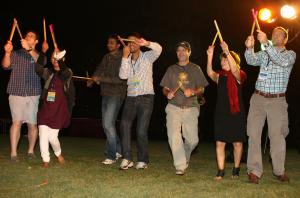Exploring heating and current drive in Ahmedabad
The 6th ITER International School was held in Ahmedabad, India from 2-6 December on the topic of radio frequency heating and current drive. The ITER International School, held annually since 2007, aims to prepare young researchers to tackle the challenges of magnetic fusion devices and to spread the global knowledge required for a timely and competent exploitation of the ITER physics potential.
Contributing about 55 percent of the auxiliary power in ITER's Baseline scenario, radio frequency heating and current drive will play a critical role in achieving ITER performance goals. Initially 20 MW of ion cyclotron and 20 MW of electron cyclotron radio frequency power will be installed in ITER; this may be upgraded to double Baseline values in later phases with addition of a further lower hybrid current drive system.
David Campbell, director of ITER's Plasma Operation Directorate, gave the inaugural presentation, stressing the important role played by the ITER International School in building up the manpower that will be crucial for the operation of ITER over several decades.



